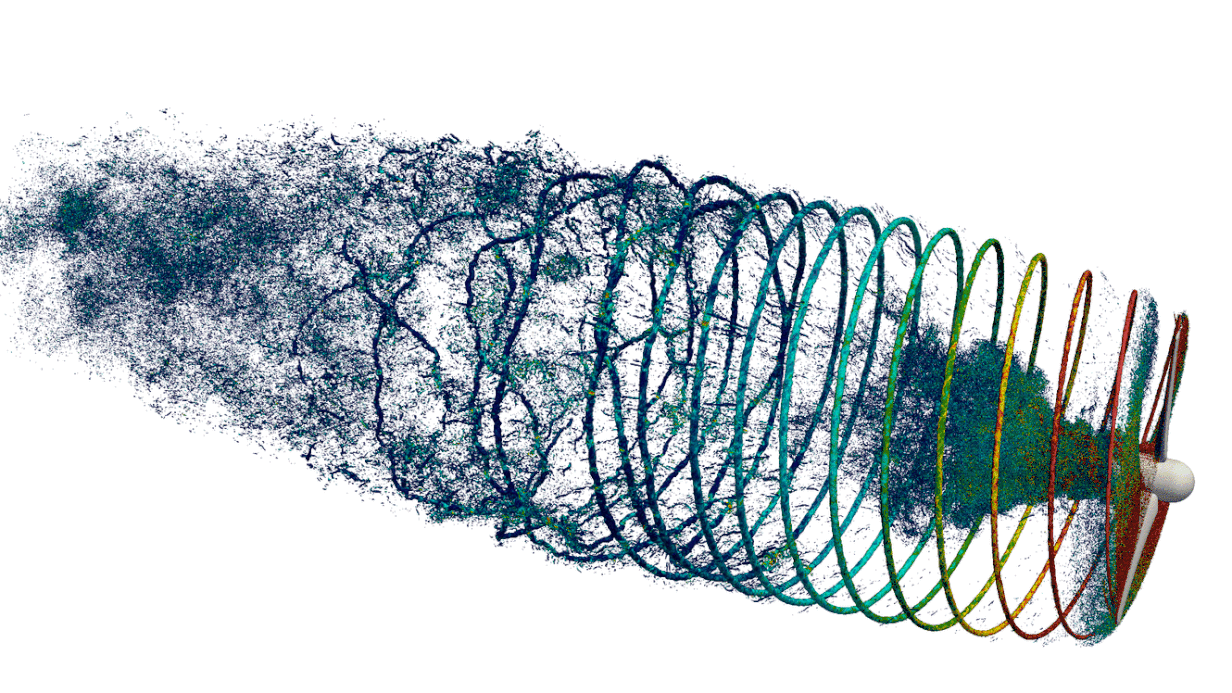
The kinetic energy of rivers, marine currents and tides is expected to provide a significant contribution to satisfy the growing demand in the next years, also taking into account the need of gradually replacing more conventional and less sustainable energy sources. To achieve this target hydrokinetic turbines need to operate in large farms in array configurations. On one side, it is convenient to increase their spacing, with the purpose of decreasing their mutual interaction, with beneficial effects on the performance and stress conditions of each turbine. On the other side, it is necessary to cluster as much as possible multiple devices, to decrease the required land resources and in turn the investment costs and the environmental impact of the installations. However, our current understanding of the mutual interaction across multiple devices is limited. It mainly depends on the wake signature of each turbine.
A better understanding of the process of wake recovery downstream of them has the potential of: i) driving the development of low-order models enabling an optimal design of farms at affordable computational costs, ii) tuning improved turbulence closures, suitable to represent this class of
especially complex wake flows, iii) guiding the development of strategies for accelerating the process of recovery and decreasing the spacing between devices in array configurations, achieving this way higher power densities and reduced environmental impact.
Antonio Posa and Riccardo Broglia, researchers at CNR-INM, conducted detailed high-fidelity simulations of a hydrokinetic turbine on a computational grid composed of about 2 billion points, well beyond what is currently reported in the field, thanks to an allocation of computational resources from PRACE (Partnership for Advanced Computing in Europe). They performed computations able to reveal new insights on the process of wake recovery, the properties of turbulence and the instability of the wake system. Their work is still ongoing, with the target of developing new understandings on the interaction between turbines and its impact on the stability of their wake system and the speed of wake recovery.
For more information, go to:
https://prace-ri.eu/energy-from-the-oceans-high-fidelity-simulations-help-to-design-efficient-tidal-turbine-farms/
https://doi.org/10.1016/j.renene.2021.02.061
https://doi.org/10.1016/j.compfluid.2020.104815
https://doi.org/10.1017/jfm.2021.433

